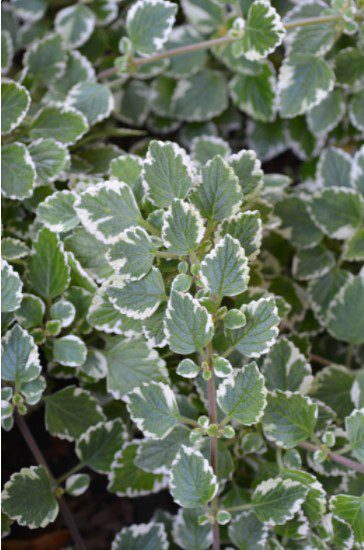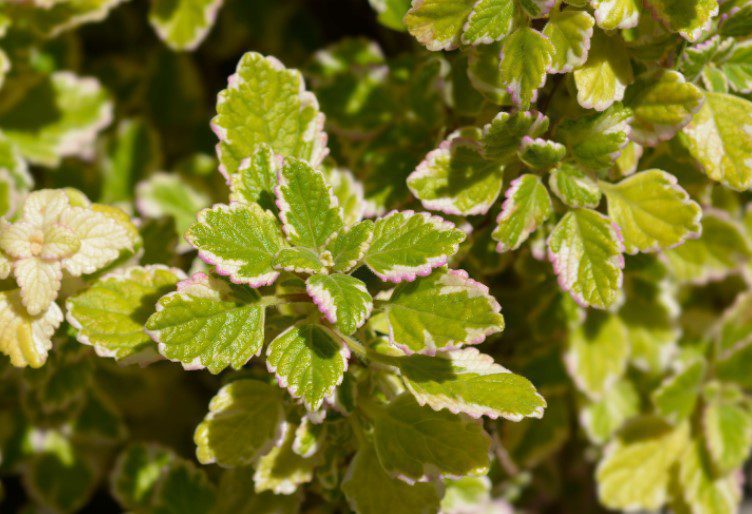Swedish Ivy
Swedish ivy is a well-known house plant that has been around for many years. It is not actually an ivy, but rather a member of the large family Plectranthus. Swedish ivy, P. australis, is bright green with scalloped edges and round leaves.
It produces tiny white flowers in the sun and can sometimes produce flowers indoors. However, it is mainly grown as a leaf plant. If it is not regularly pounded, it can become quite rangy.
It is best displayed as a hanging plant.
Plectranthus, a large genus in the mint family (Lamiaceae), is an ancestor of the mint family (Lamiaceae). It was discovered in South Africa.
Plectranthus has many other varieties that have been developed over the past decade. They have stronger, more attractively colored foliage than the original Swedish Ivy.
Plectranthus plants are bushy, with many members having a trailing growth habit. This makes them great candidates for hanging baskets or tall urns. They can be grown side-by-side with other plants, but they don’t overpower their neighbors.
They are not fussy about the growing conditions they choose. They thrive in both semi-shade and full sun. As the sun is more intense, the blooms produced by plants will increase.
Lack of bloom is usually not a problem because most gardeners grow Plectranthus for its attractive foliage.
The Swedish ivy family members like well-drained soil that has lots of humus. They also need adequate moisture.
Also, easy to propagate by cuttings and respond well to fertilizer.
Swedish Ivy Varieties
There is also a variety of Swedish ivy called P. coleoides. It has similar-shaped leaves to the common Swedish ivy, but it is darker green and has white edges. It is bushy and has long trailing stems.

P. forsteri is a variegated Plectranthus that has larger leaves. It has 6 cm wide leaves and very dark green leaves with white margins. This variety is often sold in greenhouses in spring.
The leaves of this Plectranthus are aromatic and release a pungent smell.
P. forsteri thrives when exposed to direct sunlight. It will produce beautiful, coleus-like shades of blue flowers. P. forsteri “Aureus veritus” is another form. It has green leaves with amazing golden variegation and bushier growth habits, and smaller leaves.
For years I have grown Cuban Oregano in pots. However, this plant is actually a Plectranthus (P. ambroinicus). It has a slight oregano-like smell when the leaves are touched.
This plectranthus is upright-growing and forms a bushy, multi-branched plant with small, round felted leaves at the ends. This plant is said to repel slugs.
P. tomentosa has leaves similar to Cuban oregano, but they are more spaced apart on the stems. This plectranthus has a very long stem. It is a sprawling, rangy plant.
Vicks plant is its common name. Its fragrance, which is released when the leaves are crushed, is similar to Vicks.
In my summer garden, I use several plectranthus to fill patio containers. One of my favorites is P.argentatus. It has silvery-felted leaves that are produced from trailing branches. These plants can be used as a filler for other plants in containers.
Plectranthus ecklonii has dark green leaves and burgundy undersides. The blooms look similar to coleus flowers and cover the plants when they are in bloom. The Green Spot will often have large containers of this plant displayed in full bloom during winter.
Plectranthus members might appeal to you if you like plants with unusually fragrant foliage and attractively colored leaves.
These plants are both beautiful and fascinating and can be enjoyed in the indoor and outdoor summer gardens.
Swedish Ivy Information
Name: Plectranthus coleoides marginatus
The growth habit is a sprawling evergreen plant with white-edged leaves that can grow to 12 inches tall.
Light: Plant in the shade or filtered sun locations.
Water required: Can tolerate short periods of dry soil; best to water when the soil is just starting to dry.
Feedings: Use a 20-20-20 or a similar houseplant fertilizer every month.
Propagation: Use tip cuttings that have been buried in moist sand, vermiculite to start new plants.
Hardiness: Keep your hands warm when it gets below 40 degrees.
Use: This plant is best grown in a container on windowsills, porches, shaded patios or hanging from trees near walkways.
It can also be used to cover ground in atriums.
To make compact plants, pinch off the tips of any new growths.
























Comments are closed.